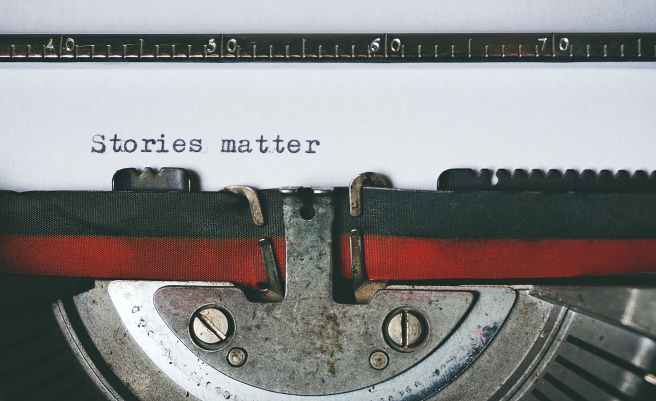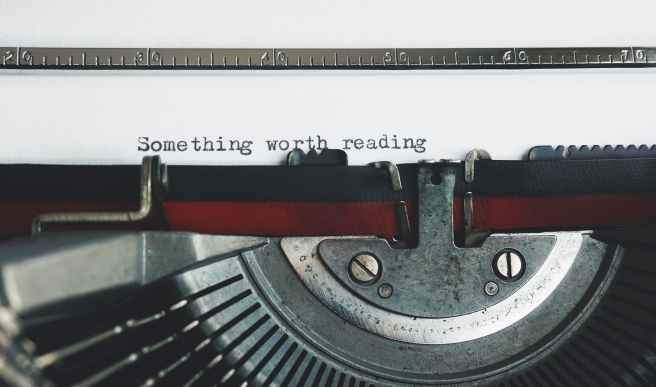
There seems to be two types of writers in this world. One enjoys taking their time telling their story, introducing characters, unveiling the plot, creating tension until they arrive at a (hopefully) satisfying ending. The second takes the shorter route, where there are minimal characters and backstory, words used thoughtfully and expediently, and an ending that is often unexpected and profound..
As you may have guessed, the first type is a novelist, while the second excels at flash fiction. While their approaches to storytelling are wildly different, they both try to accomplish the same thing—entertain readers.
According to Writers.com, flash fiction “delivers a complete narrative with plot, characters and setting, in fewer than 1,500 words. It relies on efficient use of language and storytelling without inhibiting the story’s flow and impact.”
Writing flash fiction is the equivalent of writing one scene from a novel. But even that one scene must be complete with an inciting incident, conflict and resolution.
There are several types of flash fiction, depending on the length of the story. Traditional flash fiction is a maximum of 1,500 words while the shortest type is a six-word story. There are other types and lengths in between.
Some writers might be put off by the idea of writing a story in less than 1500 words, believing that it can’t possibly be done—or be done well. Much like other writers are overwhelmed by the idea of writing a 90,000-word novel. If you have a short attention span or dread the thought of spending weeks or months writing a full-length novel, flash fiction might be worth experimenting with. It can also provide another creative outlet to complement your other writing projects.
What makes flash fiction unique and challenging is the restrictive nature of storytelling. Since you are limited by the length, you don’t have the luxury of expounding on details or characters. You really have to think carefully about how to develop your plot and the role of your characters. The key to writing flash fiction, suggest writing experts, is to plan your plot first to create the skeleton of your story, then fill in with the most critical descriptive details.
Jericho Writers offers the following tips for writing flash fiction:
* Limit the number of characters to one or two people (sometimes three). Again, you don’t have the luxury of length and space to introduce a myriad of characters. If you’re used to writing novels, think of the flash fiction as the same length as a single scene that contains only a few characters.
* Deal with a single conflict. Focusing on one single conflict moves the story along at a brisker pace without going off on different tangents.
* Focus on one genre. Because you’re working with a limited word count, stick to one genre that will be easier to write a story that readers will be able to follow.
* Limit world building and scene setting. In a 1,500-word story, you may only have one or two scenes where the story takes place. Likewise, you won’t have time or space to have heavy descriptions of your world. You may have to limit the world-building to a couple of sentences.
* Make every word and sentence count. Avoid passive voice, which tends to add unnecessary words. Be succinct, and choose the best words that tell your story. Use descriptive, concise language.
* Start in the middle of the story. You won’t have the luxury of a long, introductory narrative filled with backstory, detailed setting and interior narration of your protagonist.
That seems like an awful lot to think about for a simple, 1500-word story, but as you can see, flash fiction is deceptively complex. Writers.com offers several more tips for writing flash fiction.
- Begin by plotting the story first. That creates the spine of the story. Then go back and fill in with description and figurative language to make the story more complete.
- End the story with a bang. Conclude with an unexpected and surprising ending that makes the reader think about the story long after they’ve finished reading it.
- Be a ruthless editor. Start with a draft, just as you would with any manuscript, then go back and cut, cut, and cut some more. Don’t be shy about axing entire paragraphs that read well but don’t move the story along.
Writing flash fiction can be more challenging with its numerous restrictions, but all that planning, plotting and editing you have to do can help you become a better writer when you’re ready to tackle larger projects.
For more information about flash fiction, check out these other sources:
Flash Fiction magazine
Flash Fiction Online
Writing flash fiction: a complete guide, Jericho Writers
The Benefits of Writing Flash Fiction, Jane Friedman.com









